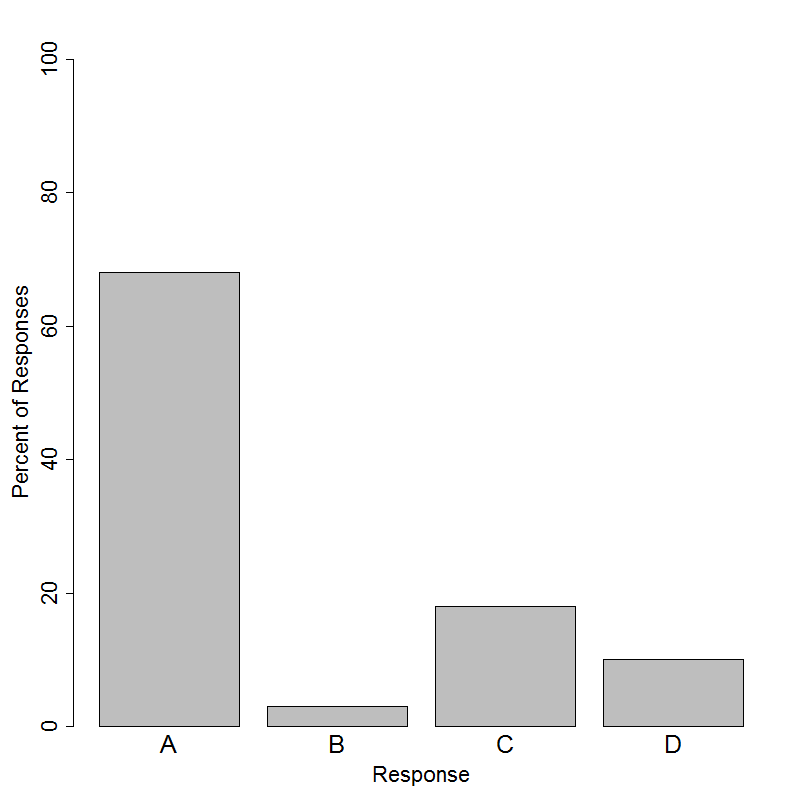A recent study on habits of elementary and middle school students reported that elementary school boys typically watch 2 hours more TV per week than girls, and middle school boys typically watch 4 hours more TV per week than girls. Based on these data, can we conclude that in high school boys typically watch 6 hours more TV per week than girls?
(A) No, because data were not collected from high school students.
(B) No, because high school students can drive and don't watch as much TV.
(C) Yes, because 6 hours is the next number in the pattern.
(D) Yes, it is reasonable to predict TV habits of high school students from middle school students.





At the beginning level of the GAISE framework, statistical investigations are typically limited to the classroom; however, even at this early level, students are expected to recognize that results may be different in another group (that is, the scope of inference is limited). Standard 7.SP.1 in the CCSSM describes in more detail study designs that allow for broader generalizations.
This question asks students whether we can draw conclusions about one group based on data collected from another group. Option (A) correctly acknowledges that these kinds of generalizations are not valid, while all other choices represent conclusions that are not based on the data. Option (B) recognizes that the two groups may be different, but it is incorrect, because the justification given is not based on the data. Option (C) represents an attempt to extend the pattern observed at the elementary and middle school level to high school students. Option (D) fails to recognize that high school students may be different from middle school students.